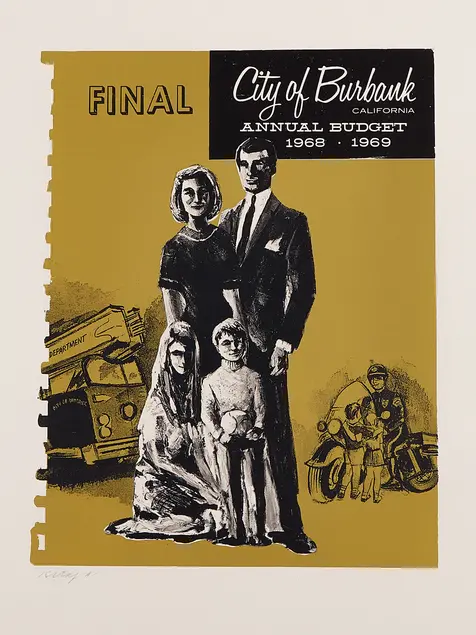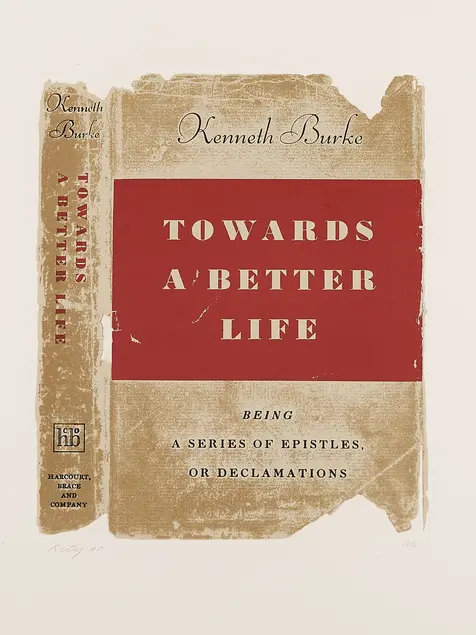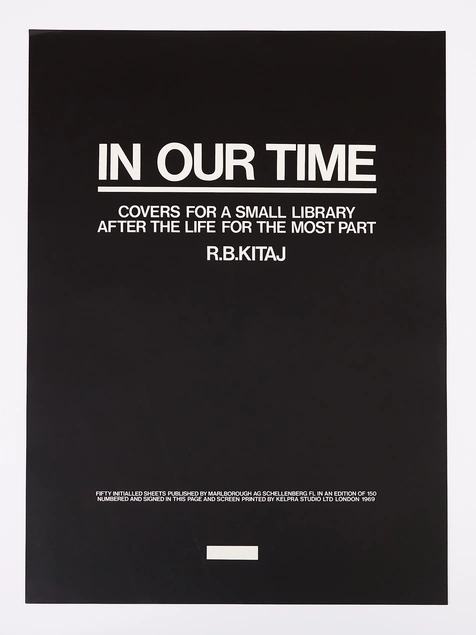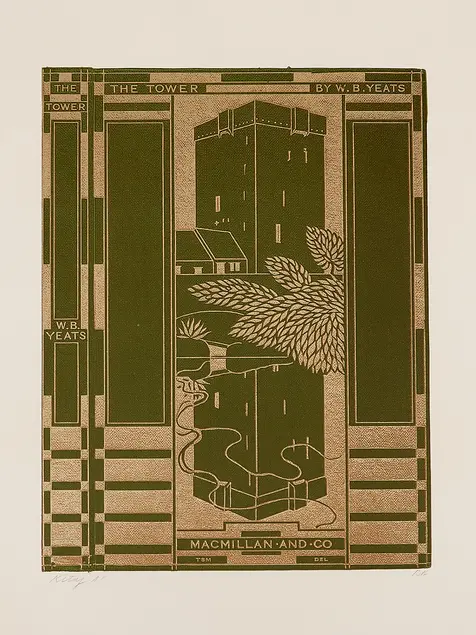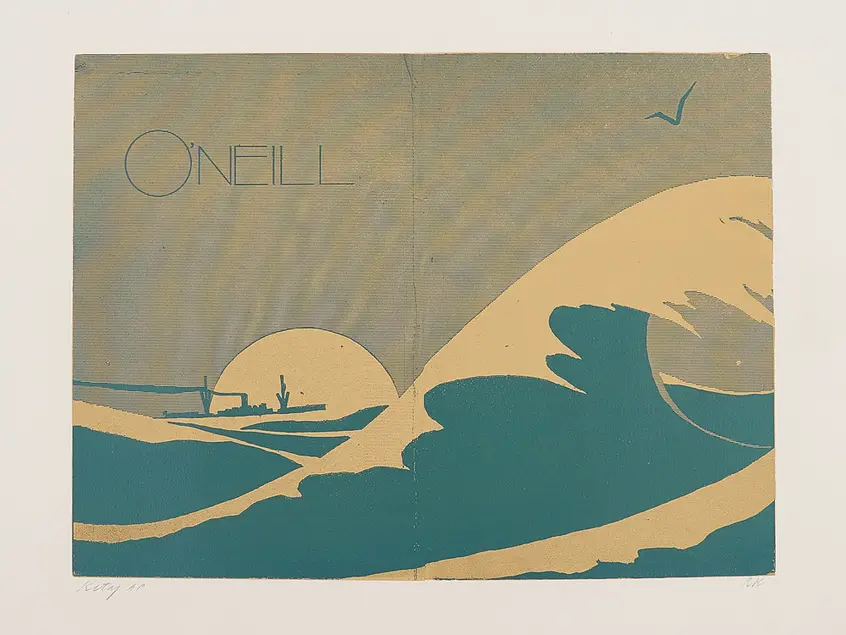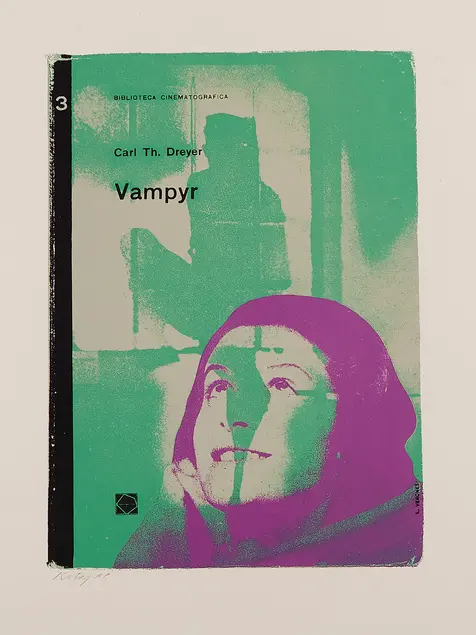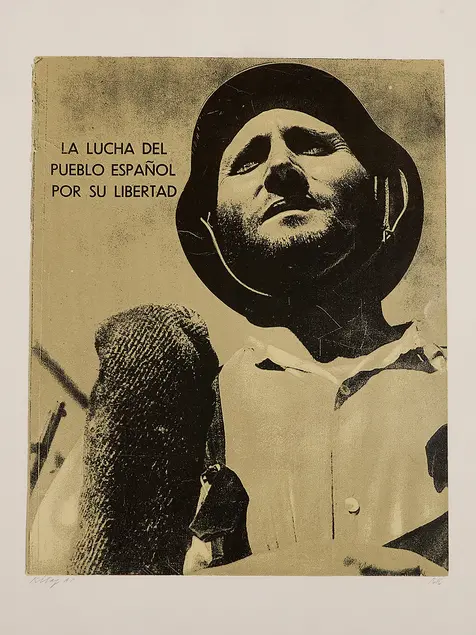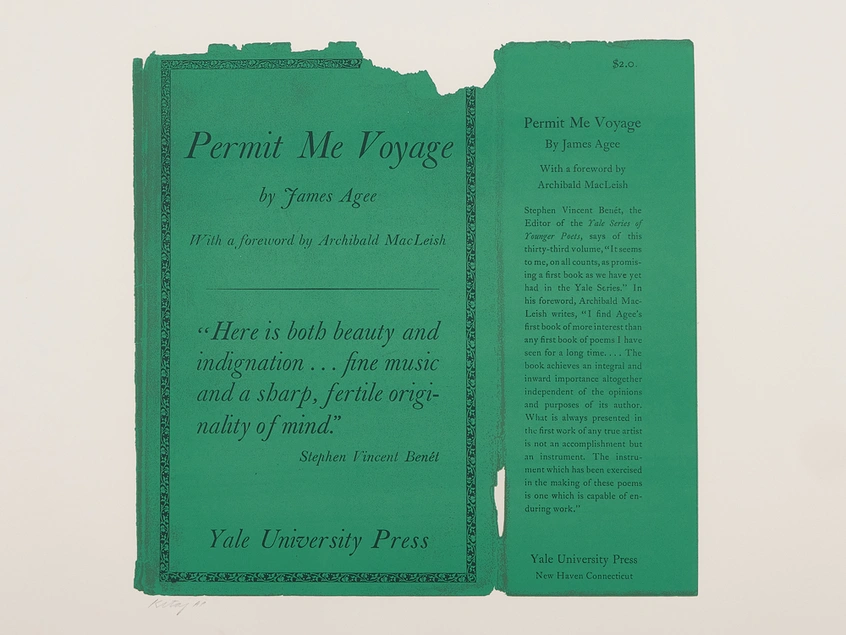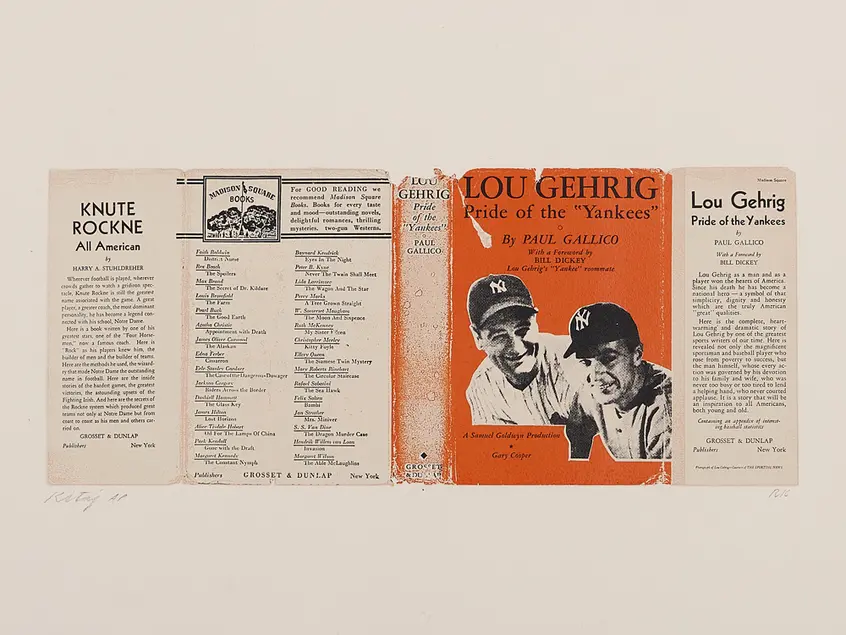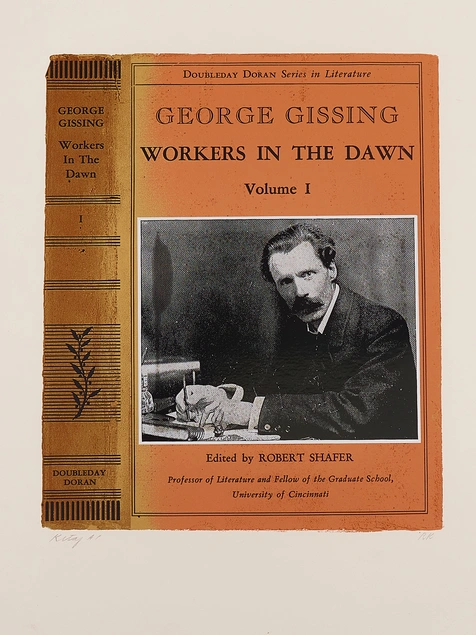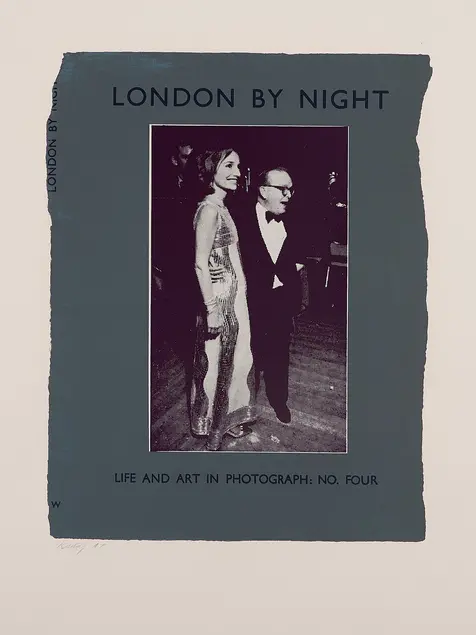SAN MARINO, Calif.—An exhibition of screen prints by artist R.B. Kitaj (1932–2007) goes on view Aug. 5, 2023, through March 4, 2024, at The Huntington Library, Art Museum, and Botanical Gardens. The newly acquired works depict hyperrealistic replicas of well-loved book covers—and some of the prints even show torn and stained covers.
On view in the Huntington Art Gallery, “In Our Time: Prints by R.B. Kitaj” explores the intersection between literary and visual arts, lays bare social and political issues that were important to the artist, and provides information about the art of screen printing. The exhibition is drawn from Kitaj’s portfolio titled In Our Time: Covers for a Small Library After the Life for the Most Part (1969–70), comprising 50 works that were acquired by The Huntington in 2020. The exhibition will have two installation rotations that will each spotlight 22 screen prints, showing 44 works in total.
Originally from Ohio, Kitaj moved to London when the city was being rebuilt following the devastation of World War II, and he stayed there for decades. In a 1976 exhibition catalog, Kitaj referred to the loose-knit group of artists he had assembled there as the “School of London.” The term, which stuck, referred to his artist friends, including painters David Hockney, Francis Bacon, and Lucian Freud, among others, who pursued figurative painting in an art world dominated by abstraction.
While he primarily worked as a painter, printmaking became a part of Kitaj’s practice in 1962, when he was introduced to master screen printer Chris Prater at London’s Kelpra Studio. Producing screen prints became a major area of focus for Kitaj in the late 1960s. The Huntington’s exhibition features prints that were a trans-Atlantic collaboration—designed by Kitaj during his brief time in California and produced by Prater and Marlborough Fine Art in London.
The prints emphasize the relationships among art, literature, photography, film, and theater through references to real books. All of the book covers in this exhibition were published during the year Kitaj lived in Los Angeles and taught at UCLA. In Final, City of Burbank, California, Annual Budget, he produces a print of the book cover that includes such details as the jagged edge where the cover might have separated from the spiral binding. Here, he plays with the intersections of art and life: This image was likely recognizable by Los Angeles and Burbank residents at the time as a practical object and was later re-imagined as a cultural icon by the artist.
The title of the exhibition—“In Our Time: Prints by R.B. Kitaj”—was inspired by the title of his portfolio, In Our Time: Covers for a Small Library After the Life for the Most Part, which can be dissected into two parts. In Our Time was presumably inspired by Ernest Hemingway’s 1925 short story collection of the same name. After the Life—added by Kitaj at the suggestion of art critic Robert Melville—refers to the act of drawing from a life model, highlighting Kitaj’s use of books as models for his screen prints.
“In the context of The Huntington and its renowned collection of books and rare books, the portfolio In Our Time has a unique resonance,” said Sabina Zonno, The Huntington’s curatorial research associate of European art and curator of the exhibition. “Many of the books pictured can be found in the Library’s stacks.”
Kitaj’s prints invite viewers to focus on the texture and fragile materiality of books, as well as on the artist’s own aesthetic, cultural, and political ideals, experiences, and artistic identity. More specifically, certain prints focus on his Jewish heritage and American upbringing, in addition to disclosing his interest in social and political ideologies, global conflicts, and civil wars. La Lucha del Pueblo Español por su Libertad portrays the cover of one of the most important photo books of leftist propaganda during the Spanish Civil War (1936–39), and Wir haben es nicht vergessen refers to the Nazi atrocities in Poland during World War II. Other prints disclose Kitaj’s views more subtly, showing the covers of books that are about the life of the poor and disadvantaged people in society, such as Articles and Pamphlets and Workers in the Dawn, or depicting highly moralistic books dealing with human trafficking or capital punishment in England.
“As a set, these screen prints can be interpreted as an intellectual self-portrait of an artist who was also a passionate reader and book collector,” Zonno said.
The exhibition will highlight several themes that Kitaj was interested in, as well as explain the process that he and Prater used to produce these screen prints while living on different continents.
Support for this exhibition is provided by the Cassat Art Endowment.
# # #
[EDITOR’S NOTE: High-resolution digital images available on request for publicity use. Request Images]
About The Huntington
The Huntington Library, Art Museum, and Botanical Gardens is a cultural and educational institution of global significance. Building on Henry E. and Arabella Huntington’s renowned collections, The Huntington supports research and promotes education in the arts, humanities, and botanical science through the growth and preservation of its collections; the development of a community of scholars, school programs, and partnerships; and the display and interpretation of its extraordinary resources for diverse audiences. The Huntington is located at 1151 Oxford Road, San Marino, California, 12 miles from downtown Los Angeles. Visitor information: huntington.org
Contacts:
Keisha Raines, 626-405-2246, kraines@huntington.org
Thea M. Page, 626-405-2260, tpage@huntington.org
